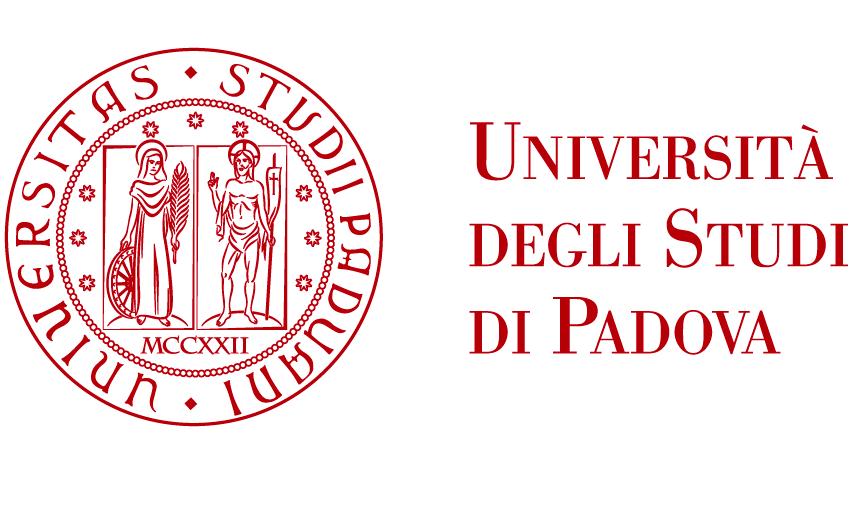Short Bio
Roberto Confalonieri is Associate Professor (INF/01) at the Department of Mathematics of the University of Padua. Prior to that he was Assistant Professor in Computer Science at the Free University of Bozen-Bolzano, and Senior Research Scientist in AI and XAI team lead at Alpha, the first European Moonshot projects company funded by Telefonica Research, working on explainable models of Artificial Intelligence in the health domain. Prior to that he was Project Manager and Researcher at the Smart Data Factory, a technology transfer centre of the Faculty of Computer Science of UniBZ, where he acquired and directed several research projects and collaborations with industries.
Roberto received his Ph.D. in Artificial Intelligence (with distinction) from the Polytechnic University of Catalonia (2011), and a M.Sc. in Computer Science from the University of Bologna. He has worked both in industry and in academia, as R&D engineer, assistant professor, and as postdoctoral researcher in several research institutions in Europe (UPC BarcelonaTech, University of Barcelona, IRIT, Goldsmiths College, IIIA-CSIC).
He holds the Italian National Habilitation (19-Nov. 2024–19-Nov. 2035): Professore I Fascia (full professor) in the scientific sector 09/H1 (Information Processing Systems).
Research Interests
His primary research interests include Artificial Intelligence, particularly Trustworthy and Explainable AI, and Knowledge Representation and Applied Ontologies, Deep Learning, particularly Computer Vision, and Hyper-spectral Images, and Computational Creativity, particularly Concept Invention, and Concept Evaluation, and Concept Refinement.
Academic Curriculum Vitae Get My CV »
News
- AAAI 25 Our paper Extracting PAC Decision Trees from Black Box Binary Classifiers: The Gender Bias Study Case on BERT-based Language Models was accepted at the 39th Annual AAAI Conference on Artificial Intelligence!
- ASN 2022-2024 I have obtained the Italian National Habilitation for Full Professor in the scientific sector 09/H1 (Information Processing Systems)!
- NeSy 2024 The Springer proceedings for the 18th International conference on Neural-Symbolic Learning and Reasoning are available! Vol.1 and Vol.2.
- Chair of the 4th Edition of the International Workshop on Data Meets Applied Ontologies in Explainable AI (DAO-XAI IV) co-located with ECAI 2024. CEUR-WS Proceedings available.
- Guest Editor of the Special Issue for NeSy 2024 in the Neurosymbolic Artificial Intelligence journal published by IOS press.
- NeurAI 2024 Our paper On the Multiple Roles of Ontologies in Explanations for Neuro-symbolic AI has been published in the Neurosymbolic Artificial Intelligence journal.
- Int.System 2024 Our paper An operational framework for guiding human evaluation in Explainable and Trustworthy AI has been published in the IEEE Intelligent Systems journal.
- Track Chair of the 18th International conference on Neural-Symbolic Learning and Reasoning.
- Ass. Editor I have joined the Editorial Board of the Neurosymbolic Artificial Intelligence journal published by IOS Press.
- Senior Editor I have been appointed as Senior Editor of the Cognitive Systems Research journal published by Elsevier.
- Best Paper Award! Our paper Almost certain termination for ALC weakening was awarded the best paper award at the 21st EPIA Conference on Artificial Intelligence.
Selected Projects
- 2024-2025 WP leader of the project Symbolic conditioning of Graph Generative Models (SymboliG), NextGeneration-EU, Future Artificial Intelligence (FAIR).
- 2020-2022 Principal Investigator of the project H2I: Hyper-spectral images for the inspection of wood and fruits, EFRE/FESR research project of the Faculty of Computer Science of UniBZ.
- 2019-2021 Principal Investigator of the project recoXplainer: A Library for Development and Offline Evaluation of Explainable Recommender Systems.
- 2017-2018 Project manager and Researcher at the Smart Data Factory, the technology transfer lab of the Faculty of Computer Science of UniBZ.
- 2016-2018 Investigator in the CoCo: Computational Technologies for Concept Invention research project, funded by UniBZ, CRC Call 2016.
- 2014-2016 Post-doctoral researcher in the COINVENT: Concept Invention Theory European project, funded by the European Commission, under the ICT STREP programme.
- 2011-2013 Post-doctoral researcher in the ACE: Autonomic Software Engineering for online cultural experiences, European project, funded by the European Commission, under the CHIST-ERA programme.
A comprehensive list of the research projects in which I participated can be found in my CV.
Courses
- 2022/23/24/25 Programmazione, First cycle degree in Mathematics, Lectures and Labs University of Padova, Italy.
- 2023/24/25 Knowledge Representation and Learning, Master Degree in Data Science, Lectures University of Padova, Italy.
- 2022/23/24 Artificial Intelligence, First cycle degree in Law and Technology, Lectures and Labs University of Padova, Italy.
- 2022/23 Informatica e Bioinformatica, First cycle degree in Molecular Biology, Lectures and Labs University of Padova, Italy.
- 2020/21/22 Advanced Topics in Machine Learning, Master in Computational Data Science, Lectures and Labs. Faculty of Computer Science, UniBZ.
- 2020/21/22 Discrete Mathematics, Bachelor in Computer Science, Exercises, Labs. Faculty of Computer Science, UniBZ.
- 2019/20 Programming Project, Bachelor in Computer Science, Exercises, Labs. Faculty of Computer Science, UniBZ.
- 2019/20 Web and Internet Engineering, Bachelor in Computer Science and Bachelor in Informatics and Management of Digital Businesses, Exercises, Labs. Faculty of Computer Science, UniBZ.
The list of courses I teach at UNIPD can be found here.
Selected Publications
- Conference Ana Ozaki, Roberto Confalonieri, Ricardo Guimarães, Anders Imenes. Extracting PAC Decision Trees from Black Box Binary Classifiers: The Gender Bias Study Case on BERT-based Language Models. In Proc. of the 39th Annual AAAI Conference on Artificial Intelligence, AAAI 2025, 2025.
- Journal Roberto Confalonieri, Jose Maria Alonso Moral. An operational framework for guiding human evaluation in Explainable and Trustworthy AI. IEEE Intelligent Systems, 2024.
- Journal Sajid Ali, Tamer Abuhmed, Shaker El-Sappagh, Khan Muhammad, Jose M Alonso-Moral, Roberto Confalonieri, Riccardo Guidotti, Javier Del Ser, Natalia Díaz-Rodríguez, Francisco Herrera. Explainable Artificial Intelligence (XAI): What we know and what is left to attain Trustworthy Artificial Intelligence. Information Fusion, 2023.
- Journal Ludovik Coba, Roberto Confalonieri, Markus Zanker. recoXplainer: A Library for Development and Offline Evaluation of Explainable Recommender Systems. IEEE Computational Intelligence Magazine, 2022.
- Journal Roberto Confalonieri, Tillman Weyde, Tarek. R. Besold, Fermín Moscoso del Prado Martín. Using ontologies to enhance human understandability of global post-hoc explanations of Black-box models. Artificial Intelligence, 2021.
- Journal Roberto Confalonieri, Ludovik Coba, Benedikt Wagner, Tarek R. Besold. A historical perspective of explainable Artificial Intelligence. Wiley Interdisciplinary Reviews: Data Mining and Knowledge Discovery, 2021.
- Conference Roberto Confalonieri, Tillman Weyde, Tarek. R. Besold, Fermín Moscoso del Prado Martín. Trepan Reloaded: A Knowledge-driven Approach to Explaining Black-Box Models. 24th European Conference on Artificial Intelligence, June 8-12, Santiago de Compostela, Spain, 2020.
- Conference Roberto Confalonieri, Tarek. R. Besold, Tillman Weyde, Kahtleen Creel, Tania Lombrozo, Shane Mueller, Patrick Shafto. What makes a good explanation? Cognitive dimensions of explaining intelligent machines at CogSci 2019: Creativity + Cognition + Computation, July 24-27, 2019, Montreal, Canada.
- Journal Roberto Confalonieri, Oliver Kutz. Blending under reconstruction: The roles of logic, ontology, and cognition in computational concept invention. Annals of Mathematics and Artificial Intelligence, 258, 2019.
- Journal Manfred Eppe, Ewen Maclean, Roberto Confalonieri, Oliver Kutz, Marco Schorlemmer, Kai-Uwe Kühnberger, Enric Plaza. A Computational Framework for Conceptual Blending. Artificial Intelligence, 256, 2018.
- Book Concept Invention: Foundations, Implementation, Social Aspects and Applications. Edited together with Marco Schorlemmner, Alison Pease, Tarek B. Besold, Maximos Kaliakatsos, Oliver Kutz, Ewen Maclean. Springer, series in Computational Synthesis and Creative Systems, 2018
- Conference Nicolas Troquard, Roberto Confalonieri, Pietro Galliani, Rafael Peñaloza, Daniele Porello, Oliver Kutz. Repairing Ontologies via Axiom Weakening. In Proc. of the 32nd AAAI Conference on Artificial Intelligence, AAAI 2018, 2018.

